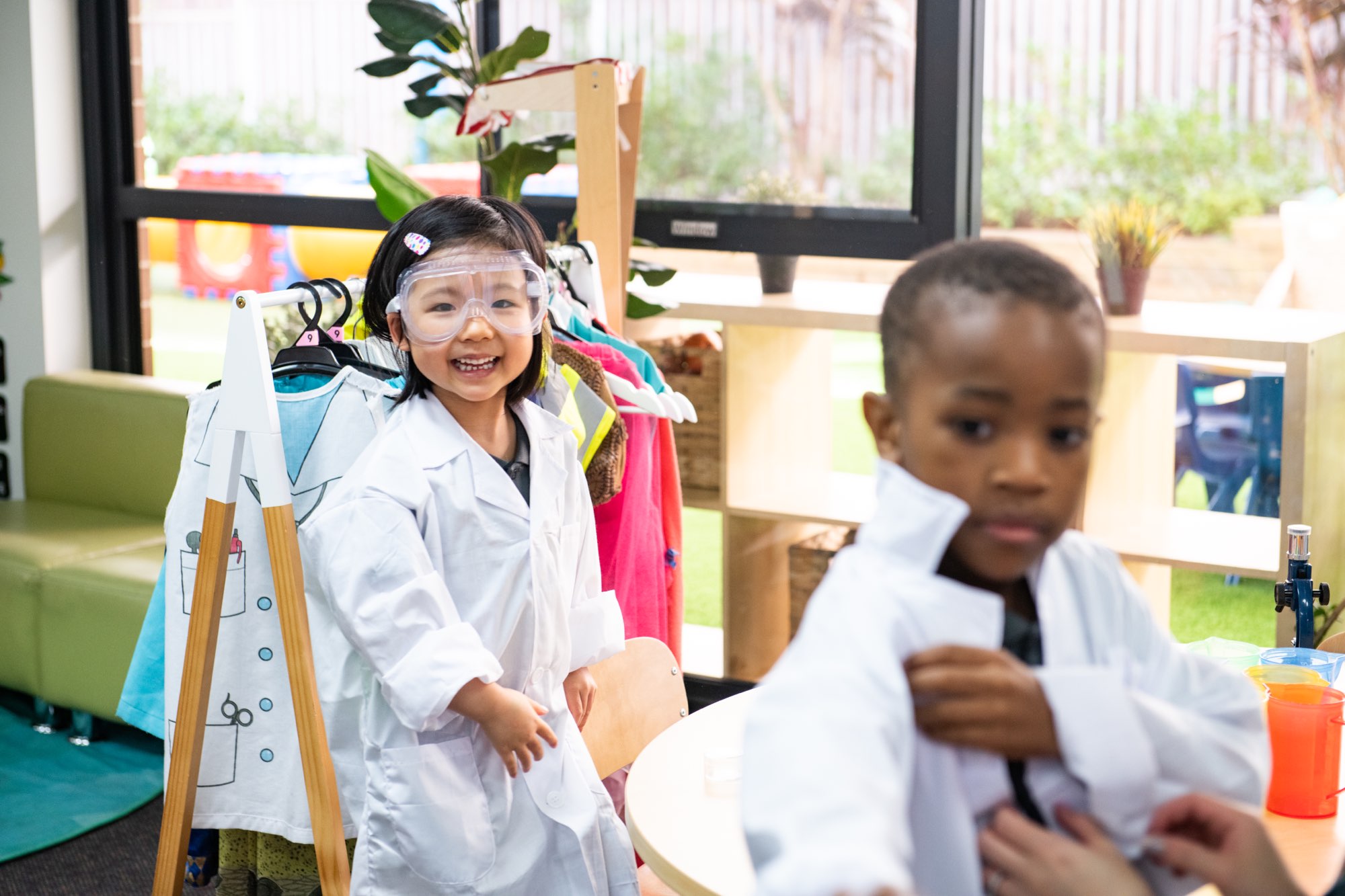
In an increasingly complex and technology-driven world, the importance of STEM education—an interdisciplinary approach integrating Science, Technology, Engineering, and Mathematics—cannot be overstated. By introducing children to these subjects and highlighting their interconnections and real-world applications, STEM education equips young learners with critical skills needed for future success. This blog delves into the core components and objectives of STEM education, explores how it fosters critical thinking and problem-solving skills in young children, and highlights how we implement STEM learning at Papilio Early Learning Centres.
What is STEM education?
STEM education is an interdisciplinary approach to teaching and learning that integrates the four specific disciplines of Science, Technology, Engineering, and Mathematics. The goal of STEM education is to provide students with a comprehensive understanding of these subjects by highlighting their interconnections and real-world applications. Here are the core components and key objectives of STEM education:
- Science: Focuses on understanding the natural world through observation, experimentation, and analysis. It covers fields such as biology, chemistry, physics, and earth sciences.
- Technology: Involves the use of tools, machines, and digital systems to solve problems and enhance human capabilities. This includes computer science, information technology, and digital literacy.
- Engineering: Emphasizes the design, construction, and improvement of structures, machines, and systems. Engineering education teaches students how to apply scientific and mathematical principles to create innovative solutions.
- Mathematics: Involves the study of numbers, quantities, shapes, and patterns. Mathematics provides the foundational language and tools needed for scientific inquiry, technological development, and engineering design.
Fostering Critical Thinking & Problem-Solving Skills
STEM education fosters critical thinking and problem solving skills in young children through various methods that engage them in exploration, experimentation, and application of knowledge. Here’s how:
Inquiry-Based Learning
STEM encourages children to ask questions and seek answers. This inquiry-based approach stimulates curiosity and drives children to investigate and explore, promoting a mindset of critical thinking and analysis.
Hands-On Activities
Engaging in practical, hands-on projects allows children to manipulate materials, observe outcomes, and draw conclusions. These activities help them understand cause and effect, test hypotheses, and learn through trial and error.
Problem-Solving Tasks
STEM activities often present children with specific challenges that require thoughtful solutions. By working through these problems, children learn to think logically, plan strategically, and apply their knowledge to find effective solutions.
Real-World Applications
STEM connects learning to real-world contexts, making it relevant and meaningful. This helps children understand the practical applications of their knowledge and encourages them to think critically about how to use their skills in everyday situations.
Collaboration & Communication
Many STEM projects involve teamwork, where children must share ideas, listen to others, and work together to achieve common goals. This collaborative environment fosters critical thinking as children negotiate solutions and learn from diverse perspectives.
Design & Engineering Challenges
Activities that involve building and creating, such as constructing models or designing experiments, require children to evaluate options, make decisions, and iterate on their designs. This process enhances their ability to think critically and solve complex problems.
Use of Technology & Tools
Introducing children to technology and tools in STEM activities allows them to explore and solve problems innovatively. Understanding how to use these tools effectively requires critical thinking and adaptability.
Encouraging Persistence
STEM education teaches children that making mistakes and encountering failures are part of the learning process. By encouraging persistence and resilience, children develop the critical thinking skills needed to overcome challenges and continue refining their ideas.
Pattern Recognition & Analysis
STEM activities often involve recognising patterns, making predictions, and analysing data. These skills are fundamental to critical thinking, helping children identify trends, draw conclusions, and make informed decisions.
Exploration & Experimentation
STEM creates an environment where exploration is encouraged. By allowing children to investigate their own ideas and interests, educators foster a sense of curiosity and a desire to understand how things work, which is essential for developing critical thinking skills.
Through these approaches, STEM education equips young children with the tools they need to think critically, solve problems, and approach challenges with confidence and creativity.
STEM Learning at Papilio Early Learning
STEM is an important component of the Lifelong Learning Curriculum at Papilio, particularly as part of our School Readiness program. Our Big Thinkers STEM program focuses on engaging children's interest in Science, Technology, Engineering and Mathematics, and covers topics like natural science, weather, physics, and biology using a learning-through-play and hands-on approach.